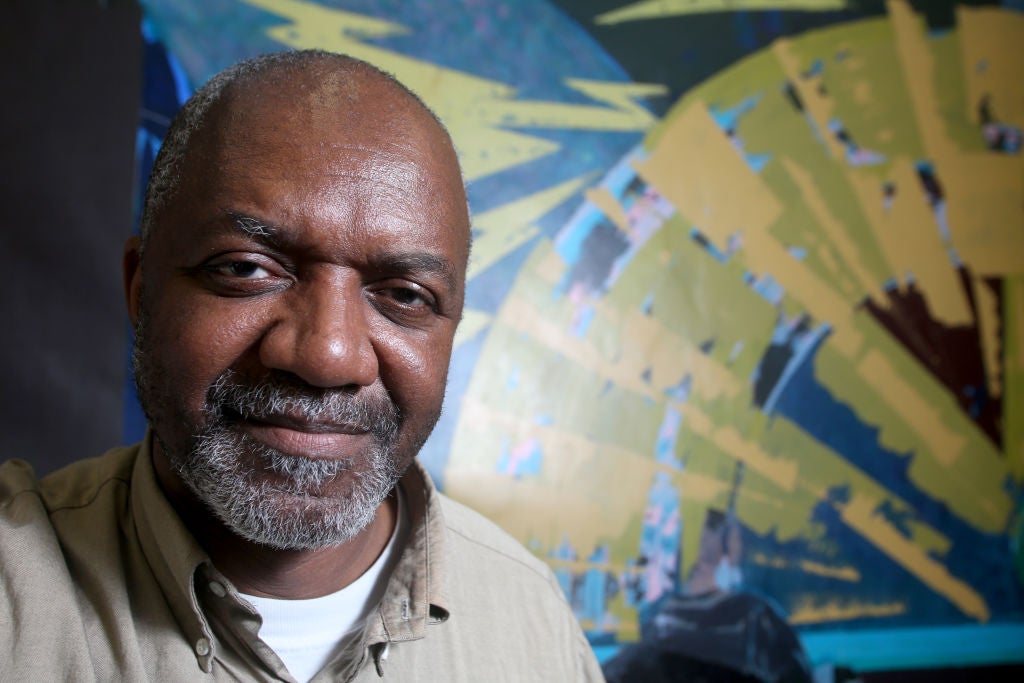Perhaps it’s a name you’re not quite familiar with, but it is one you should learn. Forget that he has been called the “most expensive Black artist” and try not to focus on the fact that a big Hip-hop star bought his work for $21 million.
Kerry James Marshall is renowned as one of the world’s greatest living painters and is ranked among the highest selling artisans today. And he’s pushing Black figures to the forefront of his work in an effort to boost their presence where it might otherwise be minimally displayed.
Suggested Reading
Historically, works created by Black artists were excluded from being displayed at the most prestigious art houses, such as the Metropolitan Museum of Art in New York City. In the late 1960s, a group out of Harlem called the Black Emergency Cultural Coalition, made up of 75 Black artists, protested the MET’s “Harlem on My Mind: Cultural Capital of Black America, 1900-68" for excluding Black artists.
“This community movement changed the discourse of Black art in mainstream American museum politics,” wrote University of California professor Bridge R. Cooks in an essay. “Miscommunications between the Harlem on My Mind organizers and the Harlem art communities fueled Black activism to counter the exhibition’s cultural assertion…”
Fast forward 50 years later, and Marshall has become a dream fulfilled. In an interview with the Financial Times, he said his approach has always been to present Black people on a powerful, grand scale.
“When I was growing up, I didn’t see a painting of [Black figures] 20ft by 15ft,” Marshall said. “That’s what makes a difference to me because power is amplified by scale. That’s the challenge I was trying to address.”
However, scale is just one aspect of Marshall’s work that has brought him success in the art world. He has become known for his use of very dark hues to present the beauty and complexity of the diaspora. In 2018, Marshall’s grandiose Past Time, 1997 piece was scale and deep hue personified. It was also rewarded as such after Sean ‘Diddy’ Combs purchased it for a staggering $21 million at a Sotheby’s auction in 2018.
“In reality, the range of skin tones goes from dark-dark to caramel and light brown and, because of the ‘one-drop rule,’ to white. That’s the reality, but the rhetorical position is, we’re Black people. So you make that concrete, which is what I did,” he told the Financial Times.
Marshall is currently in the UK to unveil his first-ever formal portrait of a living subject in his close friend and scholar Henry Louis Gates, director of the Hutchins Center for African and African American Research at Harvard University. Gates was the first African American person to win a Paul Mellon Fellowship to Cambridge University in 1979. But this piece is drastically different when it comes to likeness and use of hues.
“That’s how I wanted this to be: not just of a person, but to build a picture around them,” Marshall said during his interview with the Financial Times . “It’s meant to illuminate the sitter, not the artist, so you have the obligation to represent that person as faithfully as you can. That puts you under pressure to get the likeness right. I take that responsibility seriously.”
While his work can be spotted across numerous collections spanning the globe, including at Cambridge’s Black Atlantic exhibition, he was clear that amplified Black art does not equate to activism, but it can help a viewer consider a new perspective. “Pictures don’t do anything. People do things,” he told the Financial Times.
However, like art, that stance is subjective. Marshall, whether open to the concept or not, is an activist helping to bring Black culture and experiences to a broader audience. His depictions of Black life in barbershops, in parks, dancing among family at parties, and completing monotonous tasks like gardening should all be relatable experiences for people beyond the Black diaspora.
“I don’t have any illusions about the transformative power of art,” he said to the Times. “You can make pictures that anger, upset, inspire. But they’re not a catalyst. [Activism] requires almost no thinking, but [paintings] require you to think.”
Straight From 
Sign up for our free daily newsletter.


